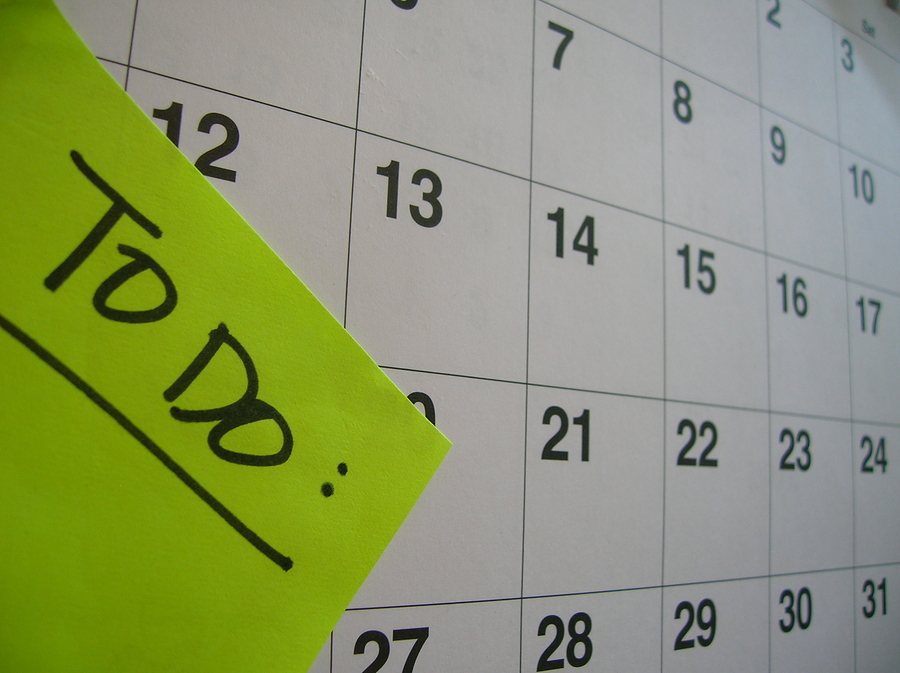 It’s tough to implement methods that keep your nonprofit marketing organized and on track when you can’t effectively manage your own time, attention and energy.
It’s tough to implement methods that keep your nonprofit marketing organized and on track when you can’t effectively manage your own time, attention and energy.
Here are 8 productivity practices that have worked for me in some way or another at various times in my career and that I know have worked for other communications directors.
Try just one of the tactics below every day for at least two weeks. Do not (repeat) do not try them all at once! The goal is to see if adopting a tactic and using it consistently, every day, making it a new habit, can have a significant impact on how you feel at work.
Option 1: Get Real about How You Spend Your Time
Not sure where all of your time really goes?
Find out what’s really eating up your time, and how that matches up with your priorities by doing an honest time tracking assessment. For at least two weeks and ideally four, commit to detailed time tracking (say at least 15 minute increments) using a tool like Toggl.com (my personal favorite time tracker).
Option 2: Try Calendar Time Blocking for Important Tasks – or Unimportant Ones
Calendar Time Blocking is where you move priorities from your to-do list into your calendar based on how long each task takes.
You can also use it in reverse: to put limits on the amount of time you spend on things that have a way of eating up too much time, like meetings or email. Maybe you say you’ll only spend 10 hours a week in meetings. When you reach the limit, no more meetings. Or maybe you’ll only spend 1 hour in the morning and one in the afternoon on email. Schedule it and stick to it.
Option 3: Set a Higher Standard for Getting on Your Calendar
Here’s your goal: Put fewer meetings or events on your calendar. Before you put a meeting on your schedule, run it through this question gauntlet:
Do I personally need to be at this meeting? Can someone else do it? What specific value am I adding by being there? How will the meeting fail if I am not there?
Does this meeting really need to take place? Do I really need to talk to this person? What happens if I don’t?
How long is enough time? What can we get done in 15 minutes? (Don’t make meetings an hour by default!)
Question the timing. Does this really need to be done NOW? What if it waits a day, a week, a month? (It’s amazing how many “urgent” things shrink as priorities or take care of themselves with a little benign neglect.)
See how many meetings or other events you can avoid by applying these or other criteria.
Option 4: Try Daily Themes or Blocking
What if you grouped liked tasks together and did them in big chunks of time? For example, you might do all of your social media posts for the week in one block of time. Or you might block off a few hours at a time for planning or writing.
You can expand this idea to themes for the day. For example, Mondays are “admin” days for me where I try to get all my paperwork, filing, organizing, bookkeeping, etc. done.
Option 5: Adopt the Pomodoro Technique and Use It Daily.
Focus on one thing and one thing only for 25 minutes at a time. Turn off and away from everything else, other than the subject of your 25-minute session. Then take a 5-minute break.
Option 6: Turn Off All Notifications for Email and Social Media.
On all of your computers and mobile devices, turn off the audio pings and visual cues about new messages. Instead, you decide how often and when you need to check them. What makes sense to you? Warning: this is harder than it sounds! We’ve been conditioned to look for notifications and you’ll likely go through withdrawal at first, frequently checking or reaching for your phone. Keep track of that! Are you able to break the cycle and get back in control of these tools, instead of the other way around?
Option 7: Cull Your To-Do List Back to “Next Action” Only
This is straight out of David Allen’s “Getting Things Done” method. The idea is to focus exclusively on the next specific action step that needs to take place. You can have a separate project plan where ALL the steps associated with a project live, but only the next action that you must take goes on to your to-do list.
If you use project management or sophisticated list management software, one way to do this is to not assign a due date to anything but your next action step. Then you only look at items with due dates.
Option 8: Only Check and Respond to Email During Set Times
Treat your time in your inbox like a scheduled meeting on your calendar. Put it on your schedule for just once, twice, or at most, three times a day. Limit the amount of time at each sitting (30 minutes?). This is the only time you get in your inbox!
Think you might need information in your email for work during other times? Plan ahead and get it out of the email during one of your scheduled email sessions. If you absolutely must get into your email outside of your set time, get in and out fast, doing NOTHING ELSE but retrieving the information you needed.
Which one will you try?






